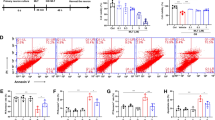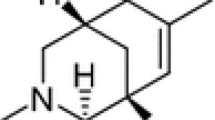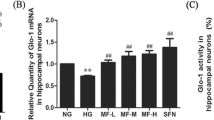Abstract
Recent studies showed that hyperglycemia is the main trigger of diabetic cognitive impairment and can cause hippocampus abnormalities. The goal of this study is to explore the effects of different concentrations of high glucose for different exposure time on cell viability as well as intracellular reactive oxygen species (ROS) generation of primary cultured hippocampal neurons. Hippocampal neurons were exposed to different concentrations of high glucose (50, 75, 100, 125, and 150 mM) for 24, 48, 72 and 96 h. Cell viability and nuclear morphology were evaluated by MTT and Hoechst assays, respectively. Intracellular ROS were monitored using the fluorescent probe DCFH-DA. The results showed that, compared with control group, the cell viability of all high glucose-treated groups decreased significantly after 72 h and there also was a significant increase of apoptotic nuclei in high glucose-treated groups from 72 to 96 h. Furthermore, 50 mM glucose induced a peak rise in ROS generation at 24 h and the intracellular ROS levels of 50 mM glucose group were significantly higher than the corresponding control group from 6 to 72 h. These results suggest that hippocampal neurons could be injured by high glucose exposure and the neuronal injury induced by high glucose is potentially mediated through intracellular ROS accumulation.





Similar content being viewed by others
References
Cukierman T, Gerstein HC, Williamson JD (2005) Cognitive decline and dementia in diabetes–systematic overview of prospective observational studies. Diabetologia 48:2460–2469. doi:10.1007/s00125-005-0023-4
McCrimmon RJ, Ryan CM, Frier BM (2012) Diabetes and cognitive dysfunction. Lancet 379:2291–2299. doi:10.1016/S0140-6736(12)60360-2
Saczynski JS, Jonsdottir MK, Garcia ME et al (2008) Cognitive impairment: an increasingly important complication of type 2 diabetes: the age, gene/environment susceptibility–Reykjavik study. Am J Epidemiol 168:1132–1139. doi:10.1093/aje/kwn228
Hou Y, Zhou L, Yang QD et al (2012) Changes in hippocampal synapses and learning-memory abilities in a streptozotocin-treated rat model and intervention by using fasudil hydrochloride. Neuroscience 200:120–129. doi:10.1016/j.neuroscience.2011.10.030
Liu K, Xie KN, Qiao ZM et al (2009) Impaired neural coordination in hippocampus of diabetic rat. Sheng Li Xue Bao 61:417–423
Stranahan AM, Norman ED, Lee K et al (2008) Diet-induced insulin resistance impairs hippocampal synaptic plasticity and cognition in middle-aged rats. Hippocampus 18:1085–1088. doi:10.1002/hipo.20470
Stranahan AM, Arumugam TV, Cutler RG et al (2008) Diabetes impairs hippocampal function through glucocorticoid-mediated effects on new and mature neurons. Nat Neurosci 11:309–317. doi:10.1038/nn2055
Duarte JM, Carvalho RA, Cunha RA et al (2009) Caffeine consumption attenuates neurochemical modifications in the hippocampus of streptozotocin-induced diabetic rats. J Neurochem 111:368–379. doi:10.1111/j.1471-4159.2009.06349.x
Yi SS, Hwang IK, Kim DW et al (2011) The chronological characteristics of SOD1 activity and inflammatory response in the hippocampi of STZ-induced type 1 diabetic rats. Neurochem Res 36:117–128. doi:10.1007/s11064-010-0280-6
Pipatpiboon N, Pratchayasakul W, Chattipakorn N et al (2012) PPARgamma agonist improves neuronal insulin receptor function in hippocampus and brain mitochondria function in rats with insulin resistance induced by long term high-fat diets. Endocrinology 153:329–338. doi:10.1210/en.2011-1502
Kaech S, Banker G (2007) Culturing hippocampal neurons. Nat Protoc 1:2406–2415
Brewer GJ, Torricelli JR (2007) Isolation and culture of adult neurons and neurospheres. Nat Protoc 2:1490–1498. doi:10.1038/nprot.2007.207
Yaffe K, Blackwell T, Kanaya AM et al (2004) Diabetes, impaired fasting glucose, and development of cognitive impairment in older women. Neurology 63:658–663
Eichenbaum H (1999) The hippocampus and mechanisms of declarative memory. Behav Brain Res 103:123–133
Wang SH, Sun ZL, Guo YJ et al (2009) Diabetes impairs hippocampal function via advanced glycation end product mediated new neuron generation in animals with diabetes-related depression. Toxicol Sci 111:72–79. doi:10.1093/toxsci/kfp126
Ye L, Wang F, Yang RH (2011) Diabetes impairs learning performance and affects the mitochondrial function of hippocampal pyramidal neurons. Brain Res 1411:57–64. doi:10.1016/j.brainres.2011.07.011
Gaspar JM, Castilho A, Baptista FI et al (2010) Long-term exposure to high glucose induces changes in the content and distribution of some exocytotic proteins in cultured hippocampal neurons. Neuroscience 171:981–992. doi:10.1016/j.neuroscience.2010.10.019
Santiago AR, Cristovao AJ, Santos PF et al (2007) High glucose induces caspase-independent cell death in retinal neural cells. Neurobiol Dis 25:464–472
Russell JW, Golovoy D, Vincent AM et al (2002) High glucose-induced oxidative stress and mitochondrial dysfunction in neurons. FASEB J 16:1738–1748
Zhao CH, Liu HQ, Cao R et al (2012) Effects of dietary fish oil on learning function and apoptosis of hippocampal pyramidal neurons in streptozotocin-diabetic rats. Brain Res 1457:33–43. doi:10.1016/j.brainres.2012.03.067
Li ZG, Zhang W, Grunberger G et al (2002) Hippocampal neuronal apoptosis in type 1 diabetes. Brain Res 946:221–231
Pop-Busui R, Sima A, Stevens M (2006) Diabetic neuropathy and oxidative stress. Diabetes Metab Res Rev 22:257–273
Rosen P, Nawroth PP, King G et al (2001) The role of oxidative stress in the onset and progression of diabetes and its complications: a summary of a Congress Series sponsored by UNESCO-MCBN, the American Diabetes Association and the German Diabetes Society. Diabetes Metab Res Rev 17:189–212
Brownlee M (2001) Biochemistry and molecular cell biology of diabetic complications. Nature 414:813–820. doi:10.1038/414813a
Sedlic F, Sepac A, Pravdic D et al (2010) Mitochondrial depolarization underlies delay in permeability transition by preconditioning with isoflurane: roles of ROS and Ca2+. Am J Physiol Cell Physiol 299:C506–C515. doi:10.1152/ajpcell.0 0006.2010
Orrenius S, Gogvadze V, Zhivotovsky B (2007) Mitochondrial oxidative stress: implications for cell death. Annu Rev Pharmacol Toxicol 47:143–183. doi:10.1146/annurev.pharmtox.47.120505.105122
Ni Y, Gong XG, Lu M et al (2008) Mitochondrial ROS burst as an early sign in sarsasapogenin-induced apoptosis in HepG2 cells. Cell Biol Int 32:337–343. doi:10.1016/j.cellbi.2007.12.004
Yokoyama Y, Nohara K, Okubo T et al (2007) Generation of reactive oxygen species is an early event in dolichyl phosphate-induced apoptosis. J Cell Biochem 100:349–361. doi:10.1002/jcb.21024
Acknowledgments
We are grateful to Professor Yuqin Liu and Bei Gu for their helpful technical assistance and scientific suggestions.
Conflicts of interest
None declared.
Author information
Authors and Affiliations
Corresponding author
Rights and permissions
About this article
Cite this article
Liu, D., Zhang, H., Gu, W. et al. Effects of exposure to high glucose on primary cultured hippocampal neurons: involvement of intracellular ROS accumulation. Neurol Sci 35, 831–837 (2014). https://doi.org/10.1007/s10072-013-1605-4
Received:
Accepted:
Published:
Issue Date:
DOI: https://doi.org/10.1007/s10072-013-1605-4




